Saludos Querida Comunidad!!!

Les traigo parte de mi trabajo que realizo con los niños; con ellos hay que estar continuamente inventando y creando para mantenerlos motivados, este material (diseñado por mi) se practica de forma progresiva, primero comenzamos con los sonidos iniciales, ma, pa, sa, ta, la ,da, na .... con sus respectivas vocales; luego que el niño ya las identifica e incluso las ha escrito, pasamos a reforzarlas con este juego donde deberá colocar el sonido o silaba inicial asociado al dibujo, les doy un ejemplo de dibujos sencillos que puedes realizar, con sus respectivos sonidos iniciales o silabas.
I bring you part of my work that I do with children; with them we must be continuously inventing and creating to keep them motivated, this material (designed by me) is practiced progressively, first we start with the initial sounds, ma, pa, sa, ta, la, da, na .... with their respective vowels; after the child already identifies them and has even written them, we reinforce them with this game where you must place the initial sound or syllable associated with the drawing, I give an example of simple drawings that you can make, with their respective initial sounds or syllables.

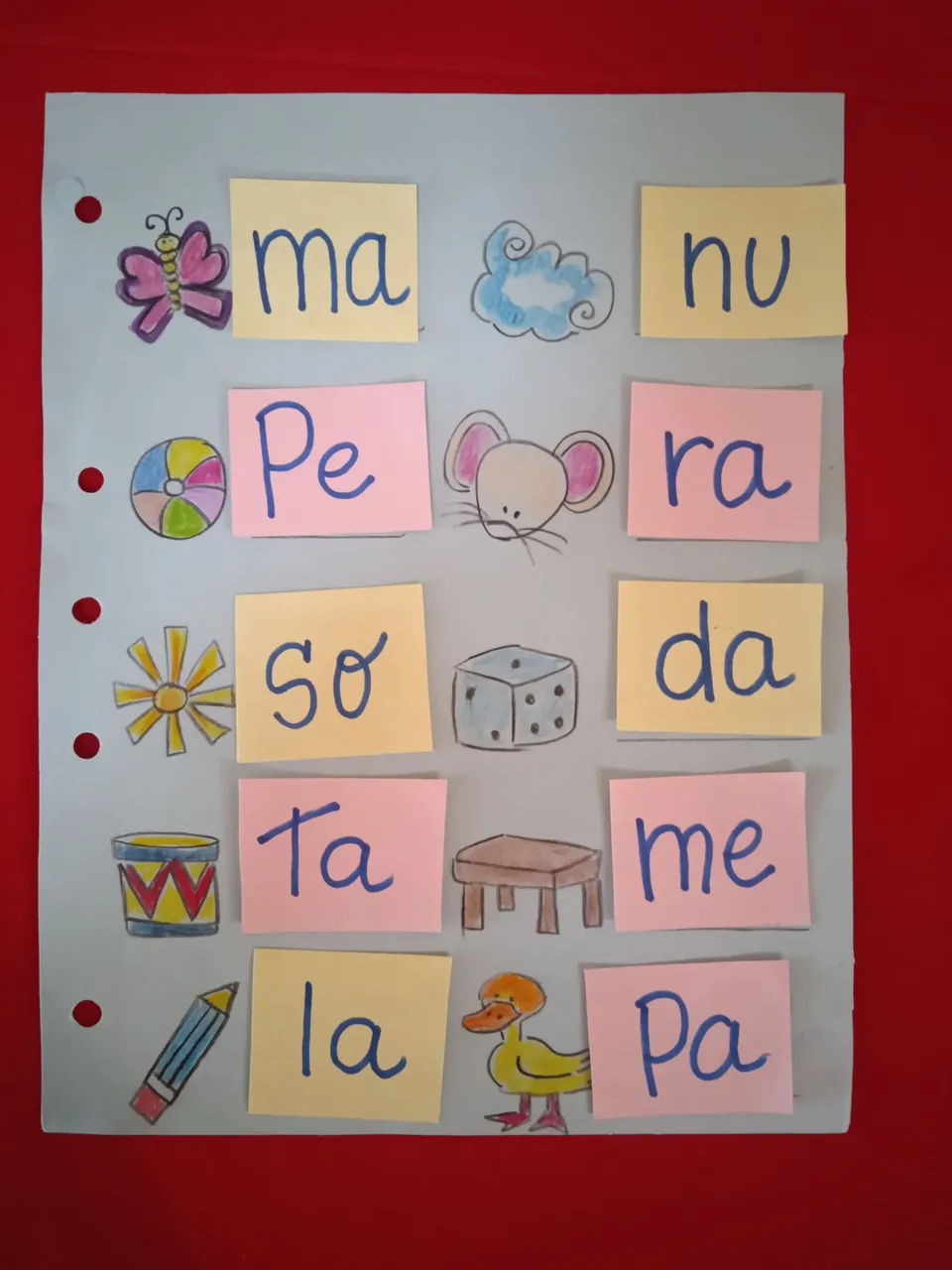
Para comenzar, se le pide al niño que nombre cada uno de los dibujos y escuche atentamente, cuál es su sonido inicial o silaba. Se le entrega las fichas que contienen los sonidos o silabas y se le pide que la coloque junto al dibujo que comienza con ese sonido.
To begin, the child is asked to name each of the drawings and listen carefully to the initial sound or syllable. The child is given the cards that contain the sounds or syllables and is asked to place it next to the picture that begins with that sound.
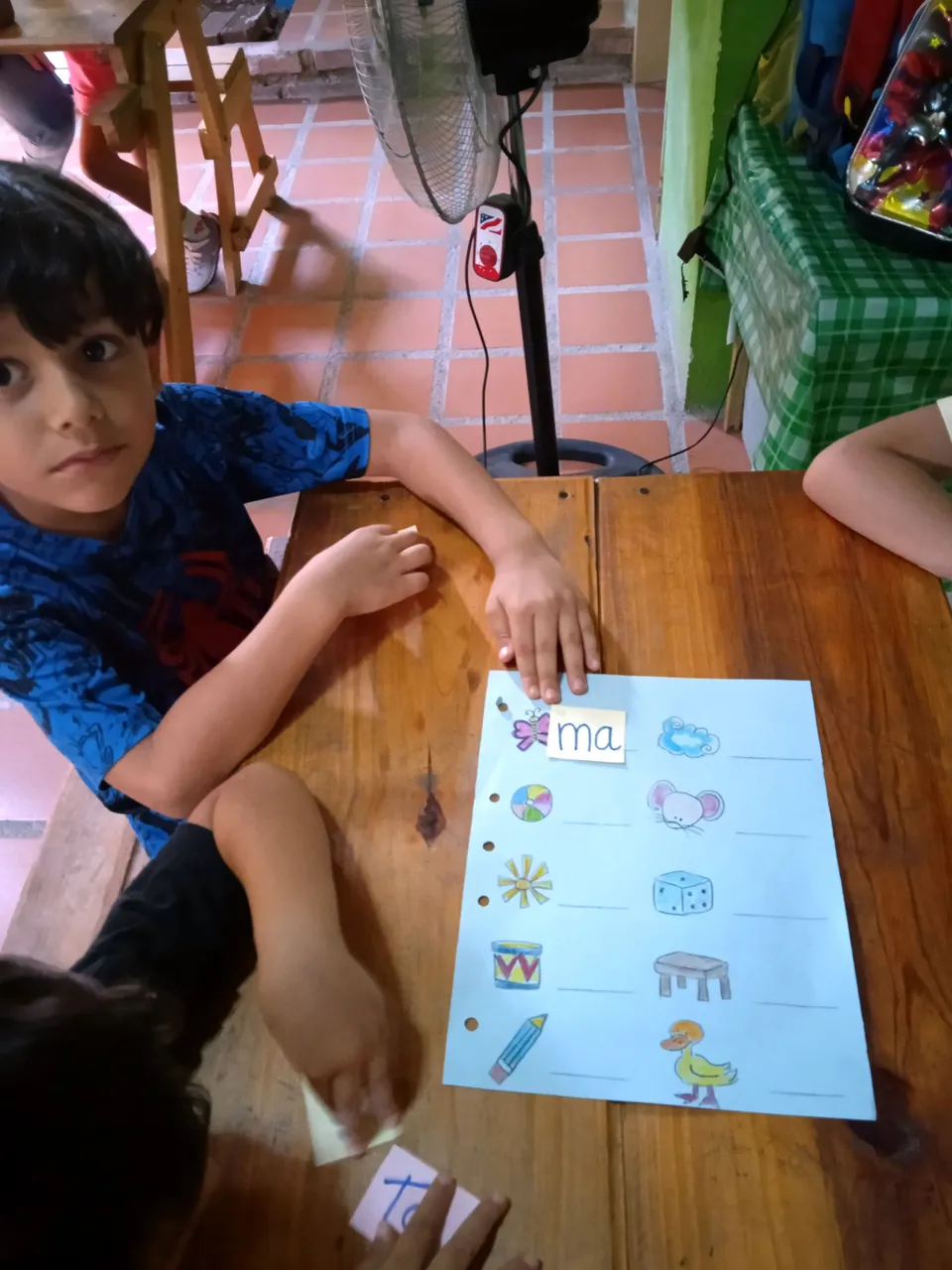
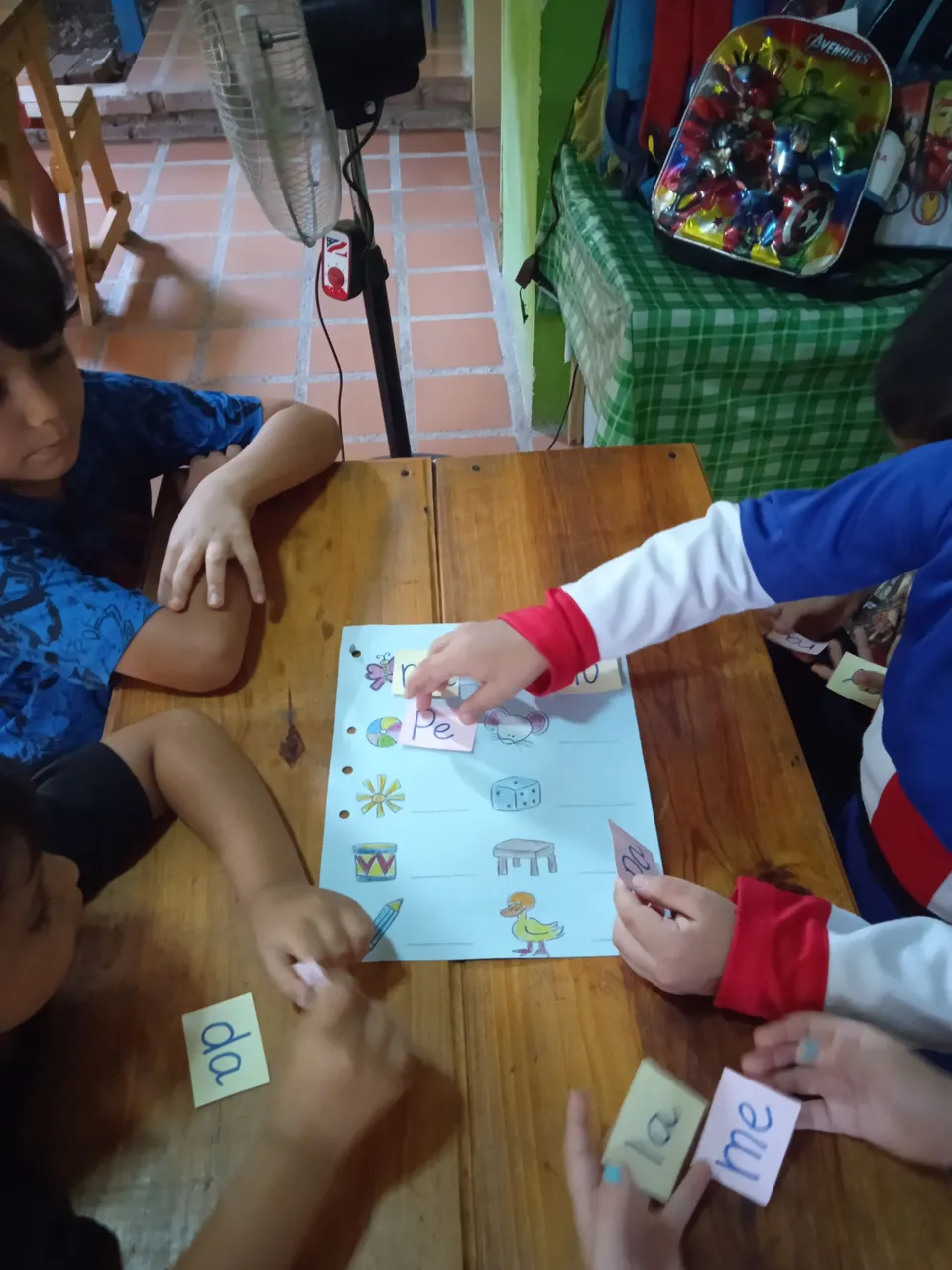
Si lo hacen en grupo, se le entrega a cada niño las fichas y las van colocando al nombrar el dibujo; por ejemplo: pelota, con cuál sonido comienza..... muy bien... quién tiene ese sonido.
If you do it in a group, give each child the tokens and place them by naming the picture; for example: ball, which sound starts with ..... very well... who has that sound.
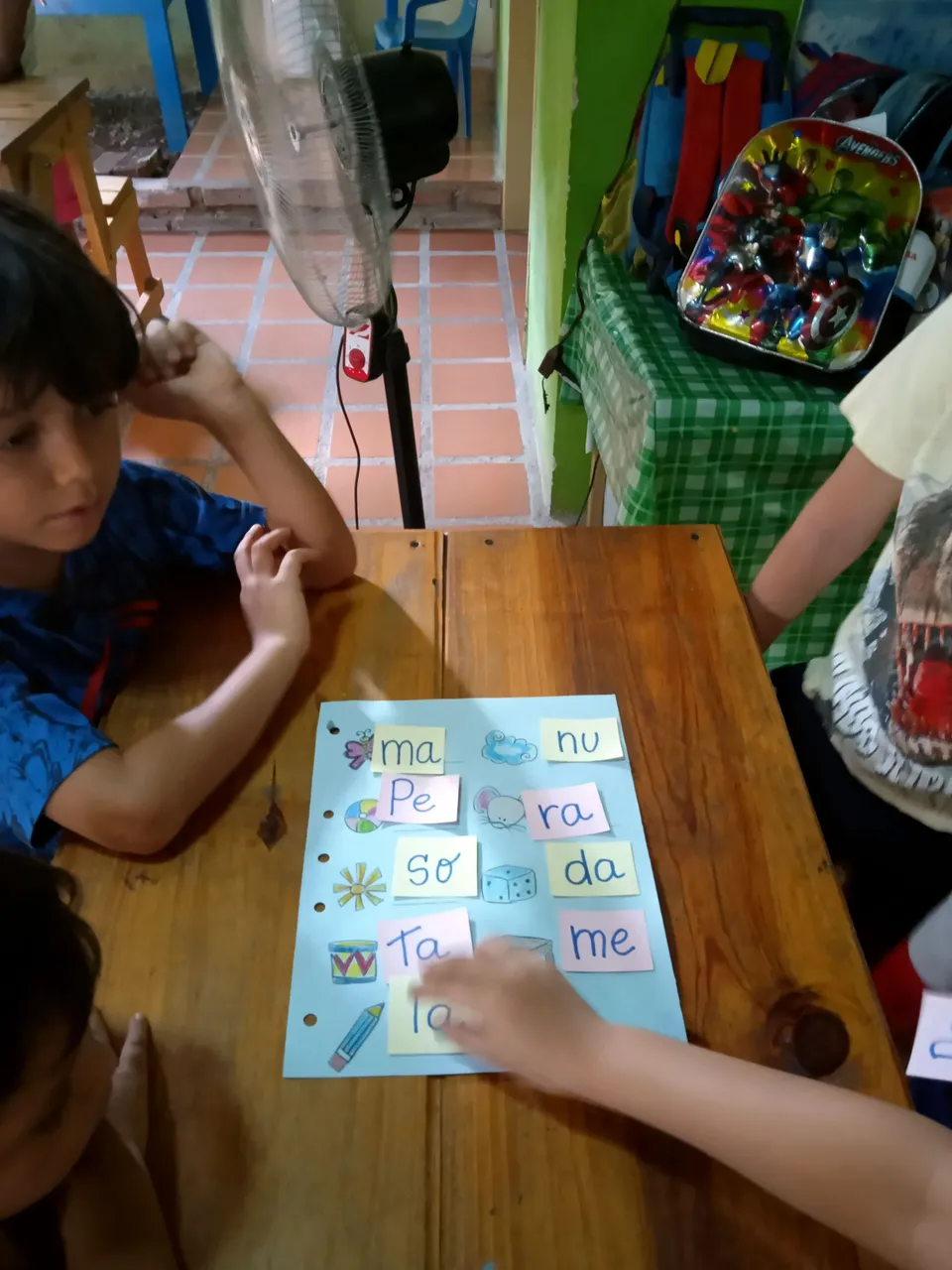
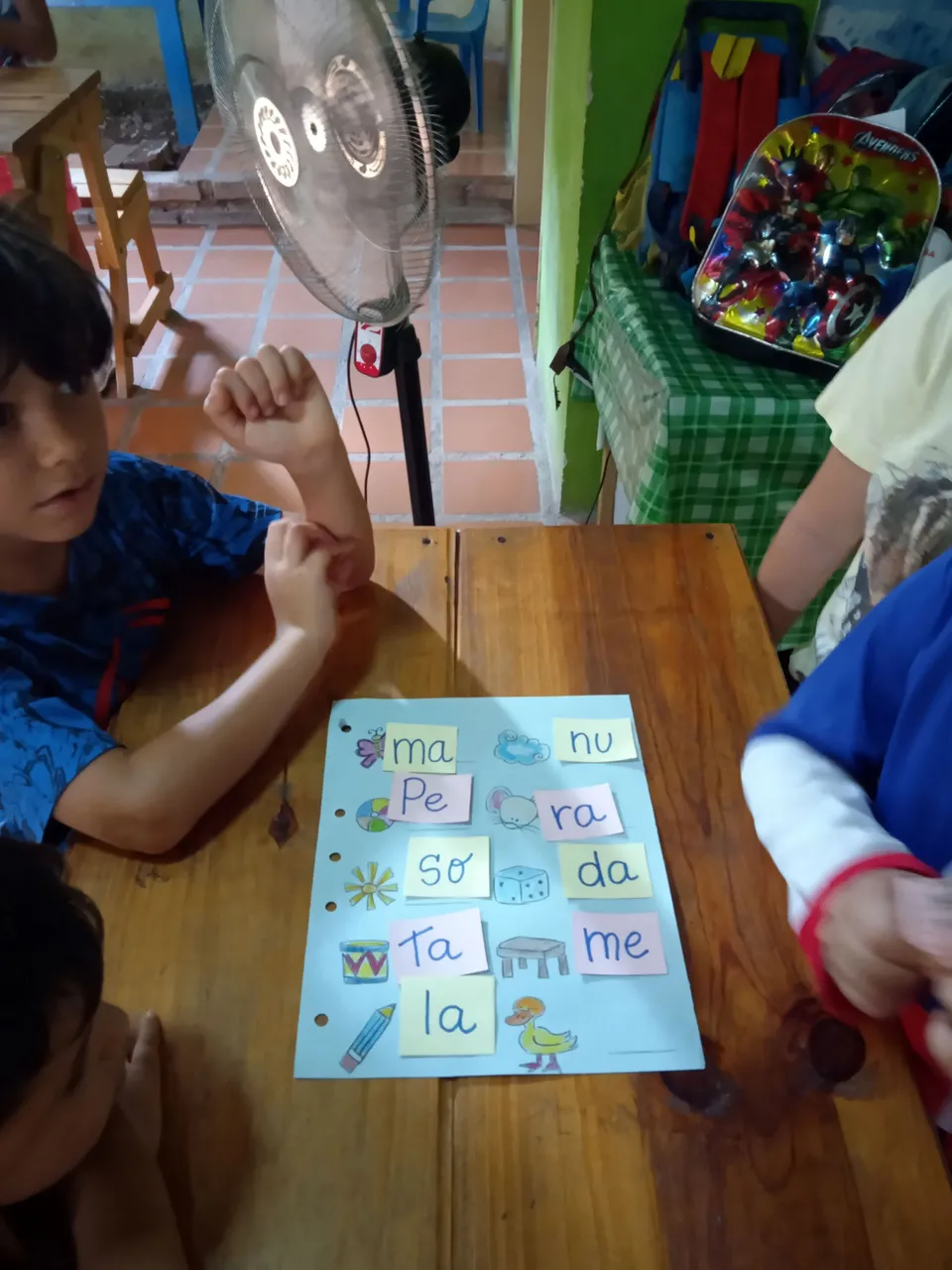
Y así sucesivamente hasta colocar la totalidad de los sonidos, pueden hacer la cantidad de láminas que deseen, con diferentes sonidos iniciales, la idea es ir realizándolas con los sonidos que el niño va aprendiendo de forma progresiva, igualmente se debe repetir varias veces hasta que le resulte sumamente fácil y rápido completarla.Particularmente les pongo un poco de acción, contándoles para ver en cuantos segundo identifica la figura y el sonido y así ellos se van percatando que cada vez lo hacen mas rápido.
And so on until all the sounds are placed, you can make as many sheets as you want, with different initial sounds, the idea is to make them with the sounds that the child is learning progressively, also it must be repeated several times until it is extremely easy and fast to complete it, I particularly put them a little action, counting to see how many seconds to identify the figure and the sound and so they are noticing that every time they do it faster.
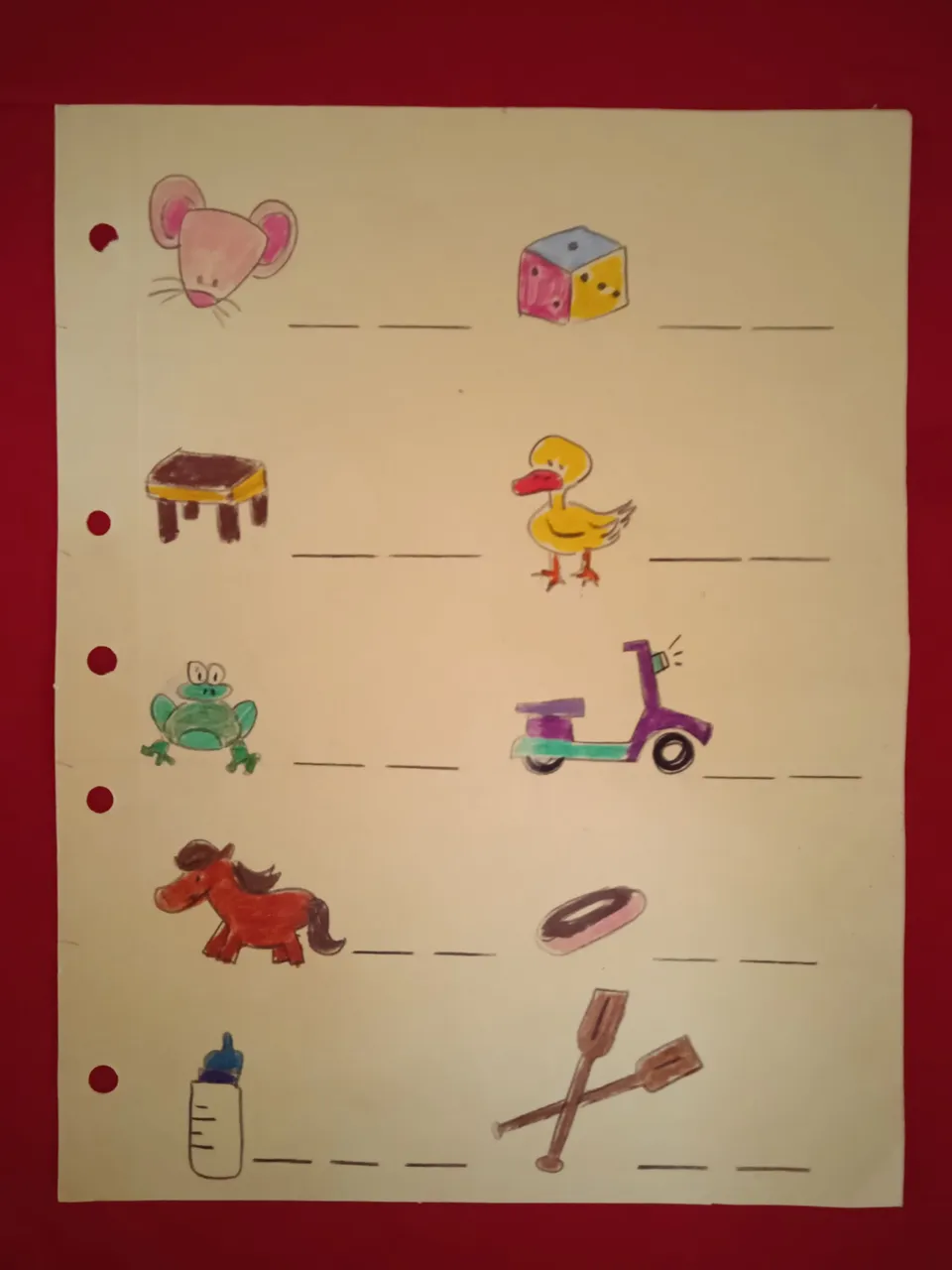
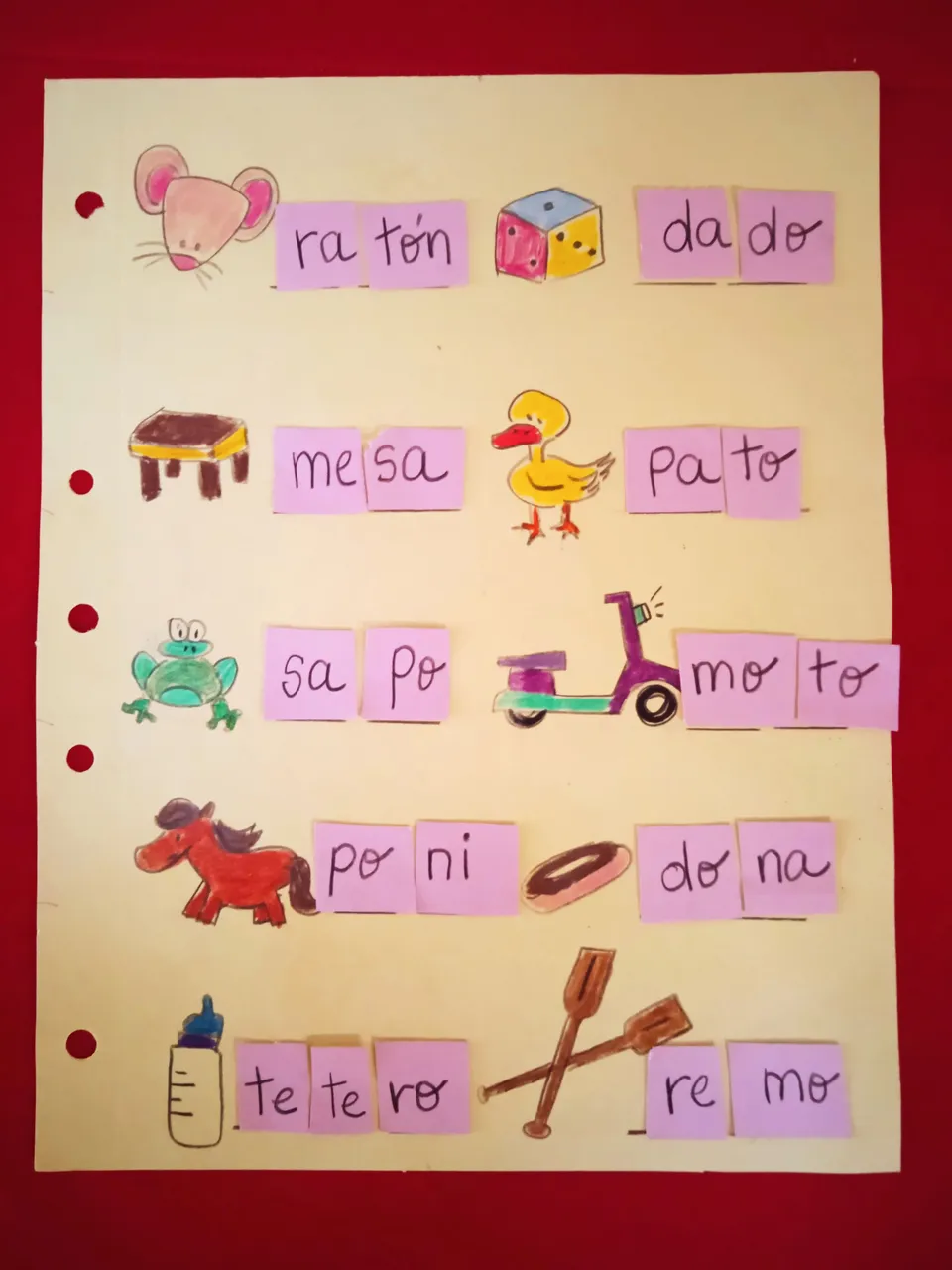
Una vez que vamos avanzando en el aprendizaje de sonidos, ahora vamos a formar palabras, con todos esos sonidos que ya el niño identifica; y en vez de una sola rayita al lado del dibujo, le colocamos dos, porque ahora serán dos o tres sonidos que formaran las palabras.
Once we are advancing in the learning of sounds, now we are going to form words, with all those sounds that the child already identifies; and instead of a single line next to the drawing, we place two, because now there will be two or three sounds that will form the words.


La dinámica es la misma solo que serán dos o tres sonido, uno inicial, intermedio y final; aquí trabajamos no solo los sonidos, si no el niño va entendiendo que hay un orden y secuencia y que gracias a ese orden de sonidos se forma la palabra, y que cada sonido debe tener su posición, si lo cambiamos podríamos hasta formar una palabra completamente distinta.
The dynamics is the same only that there will be two or three sounds, one initial, intermediate and final; here we work not only the sounds, but the child will understand that there is an order and sequence and that thanks to that order of sounds the word is formed, and that each sound must have its position, if we change it we could form a completely different word.
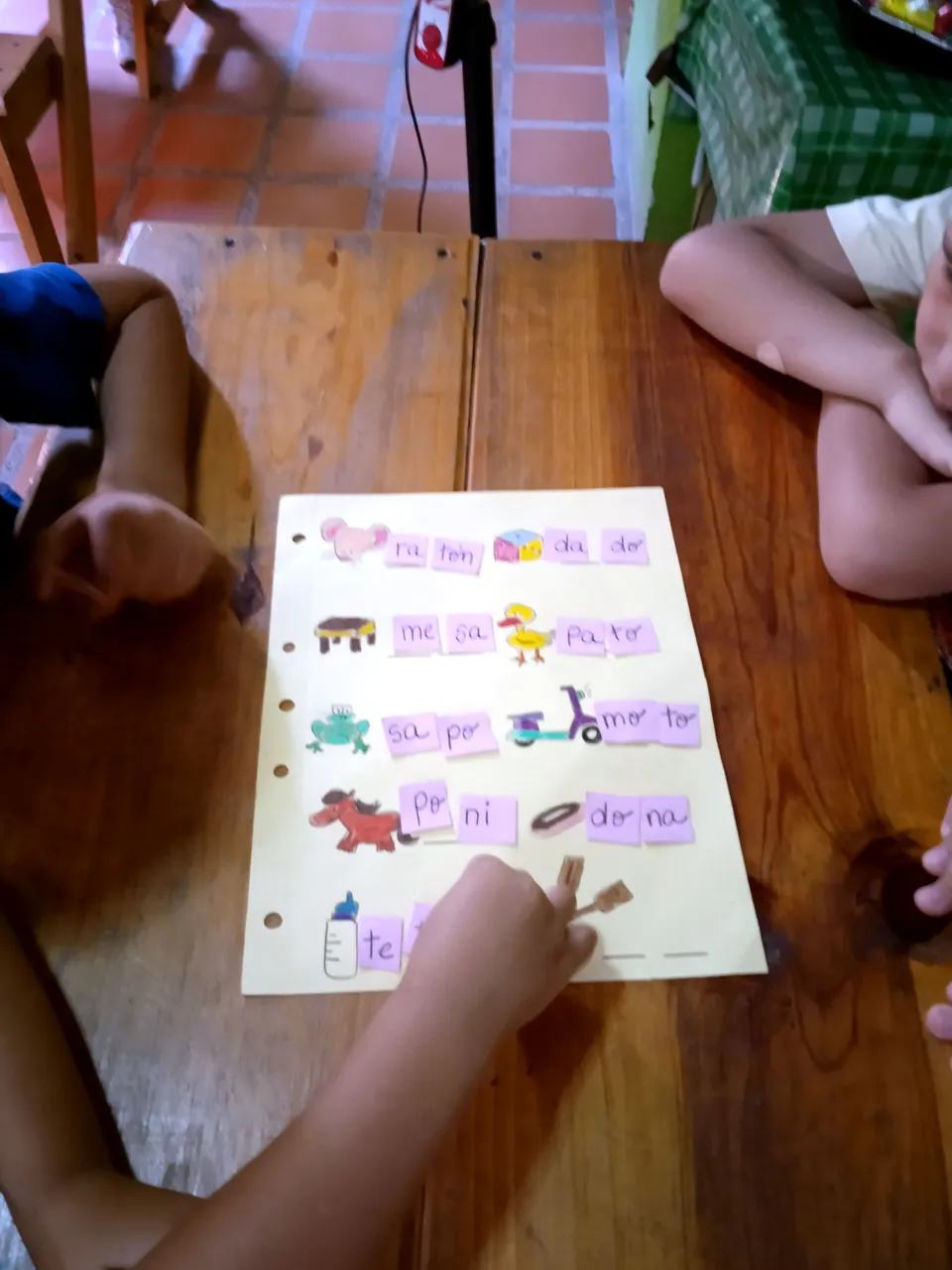
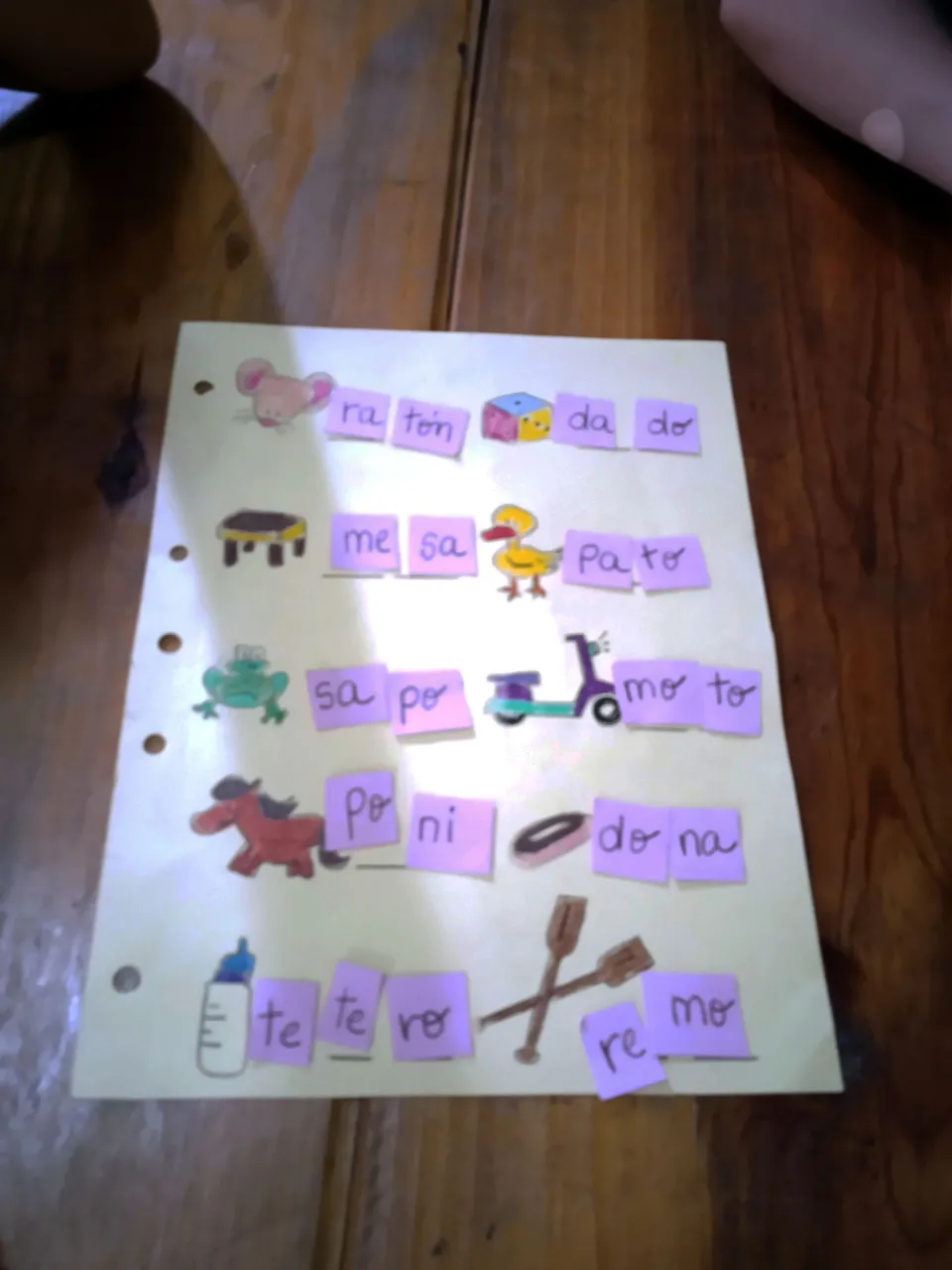
Este juego lo repetimos varias veces hasta que lo domine y le sea fácil. De aquí pasamos a las palabras asociadas a su dibujo. Practicaremos con ellos la lectura rápida, lo podemos hacer de dos formas. Ya sea que estemos realizando el juego con el niño solo o en grupo, repartimos 4 carta. Una de las primeras formas es entregándoles las 4 palabras, y vamos colocando en el centro un dibujo,deberá buscar entre sus cartas si tiene la palabra correspondiente al dibujo, podemos contar para ver en cuanto tiempo lo logra e ir midiendo su velocidad. Esto les emociona mucho y les encanta ver que cada vez lo hacen en menos tiempo ,al leer la palabra rápidamente.
We repeat this game several times until the child masters it and finds it easy. From here we move on to the words associated with their drawing. We will practice speed reading with them, we can do it in two ways. Whether we are playing the game with the child alone or in a group, we hand out 4 cards. One of the first ways is to give them the 4 words, and we place a drawing in the center, they will have to look among their cards if they have the word corresponding to the drawing, we can count to see how long it takes to do it and measure their speed. This excites them a lot and they love to see that each time they do it in less time, reading the word quickly.
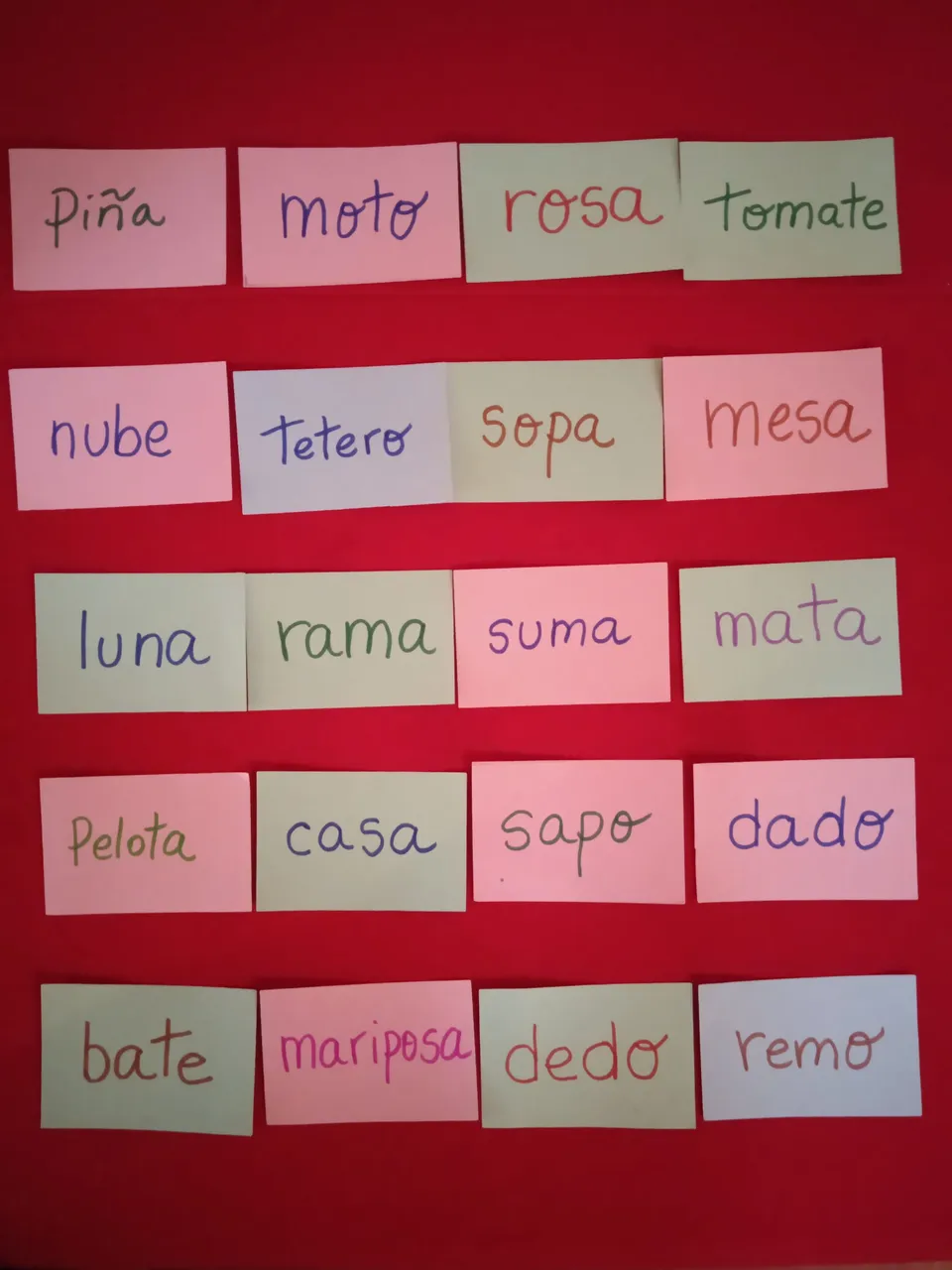
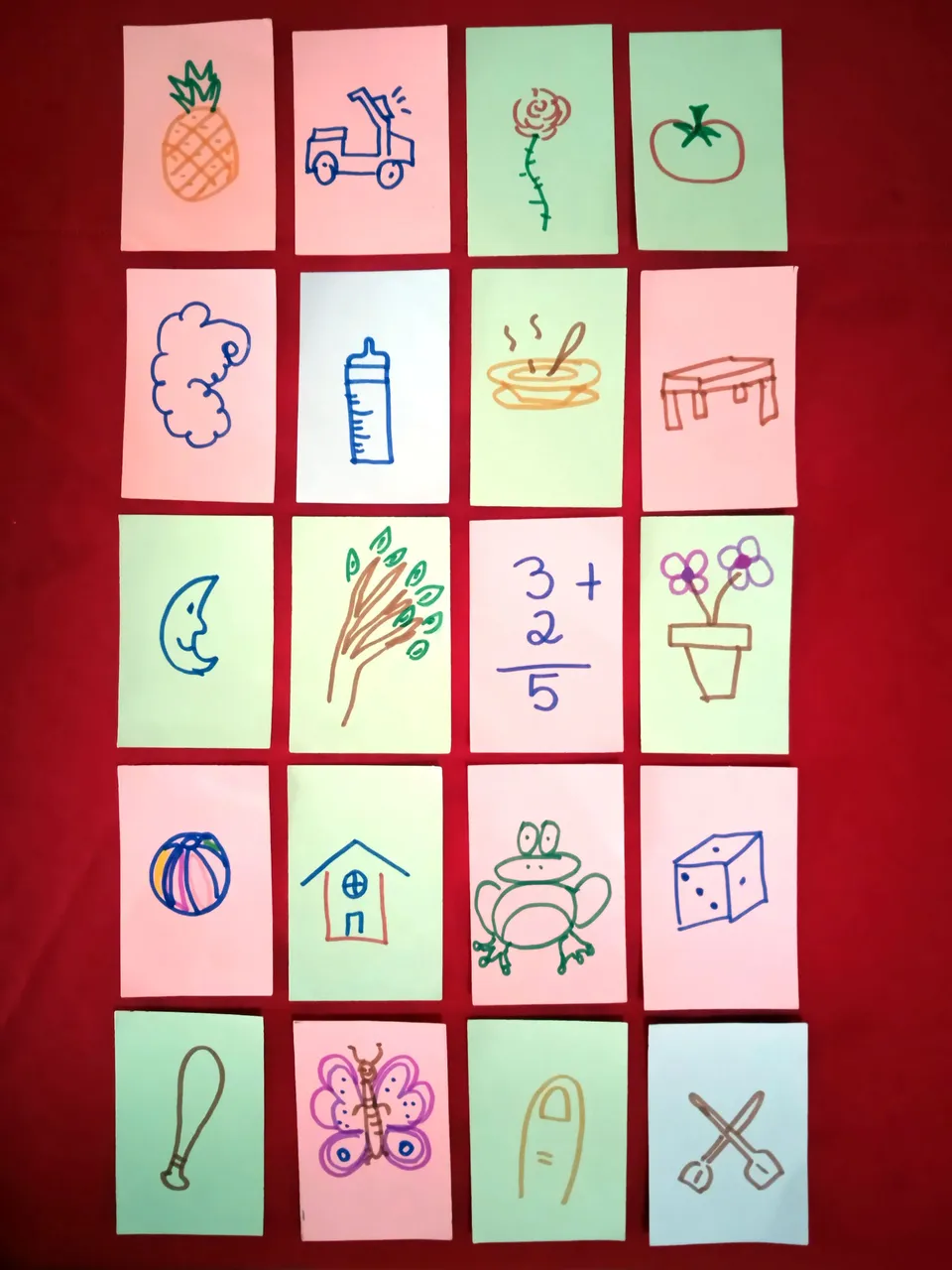
La otra forma de jugar, es haciendo lo contrario, entregándole al niño 4 cartas con dibujos, e ir colocando en el centro las palabras para que el las identifique, así va reuniendo sus cartas; igualmente se puede contar para ver en cuanto tiempo lo hace.
The other way to play is to do the opposite, giving the child 4 cards with pictures, and placing the words in the center for the child to identify them, so that he/she can collect his/her cards; you can also count to see how long it takes to do it.

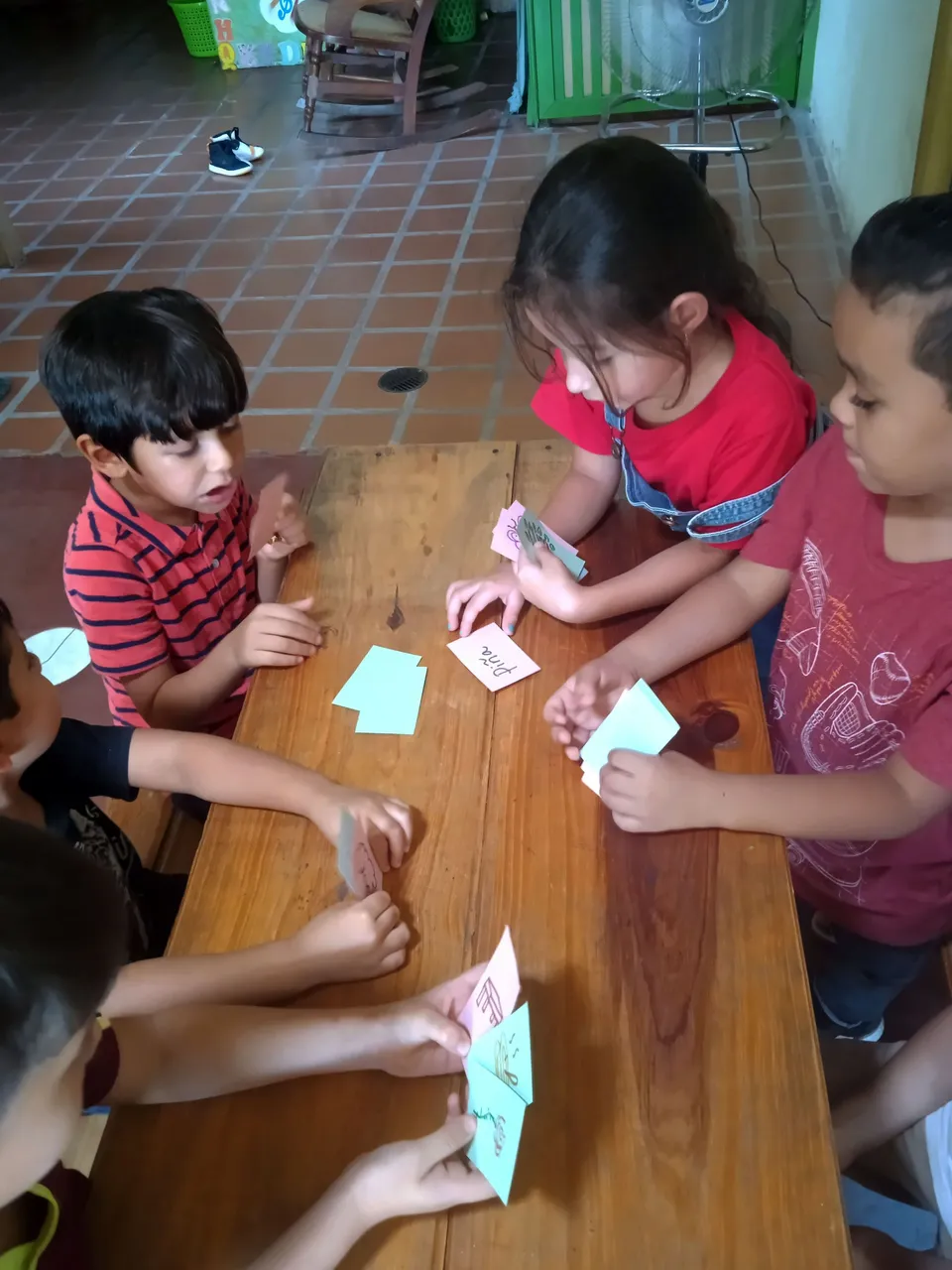
Si lo hacen en grupo es importante evitar la competencia y comparación, se trata de que ellos vayan reconociendo sus logros individuales y que si tienen interés, lo lograran en menor tiempo, el juego siempre será unos de los recursos mas efectivos a la hora de cualquier aprendizaje.
If they do it in a group it is important to avoid competition and comparison, it is about them recognizing their individual achievements and that if they are interested, they will achieve it in less time, the game will always be one of the most effective resources at the time of any learning.

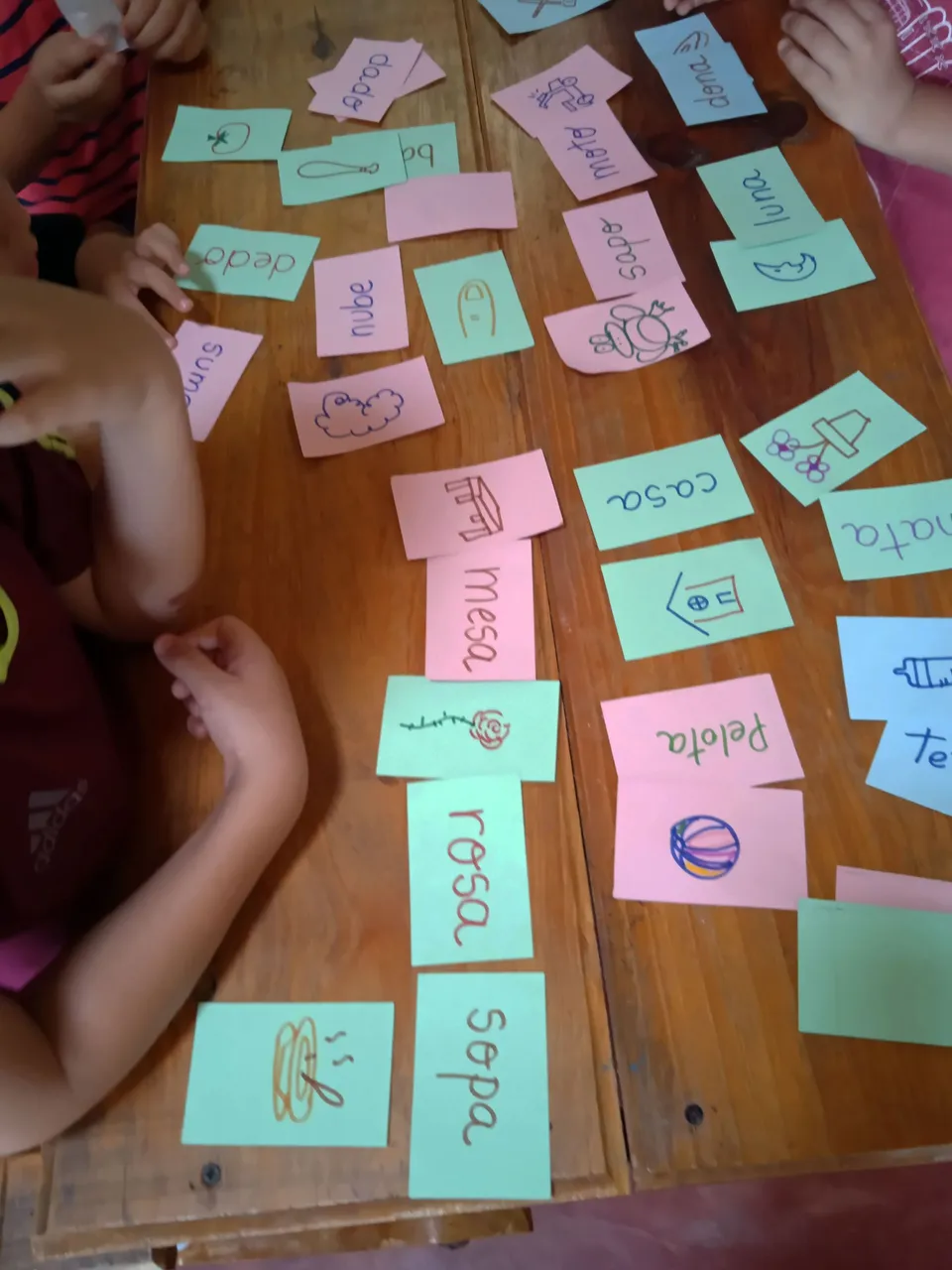
Al terminar asocian sus dibujos con las palabras y cuentan cuantos aciertos tuvieron en esa oportunidad.
When they finish, they associate their drawings with the words and count how many correct guesses they got that time.
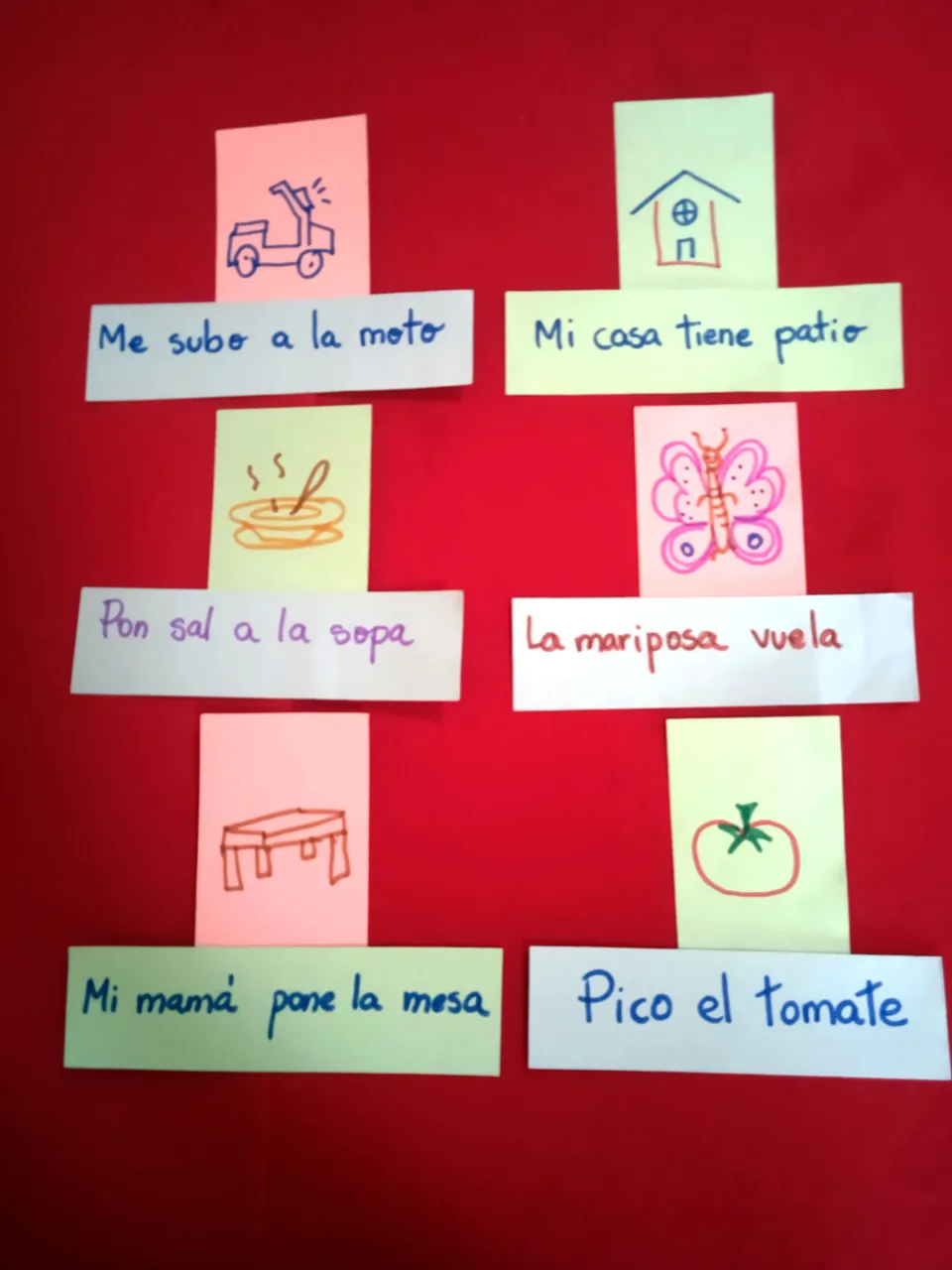
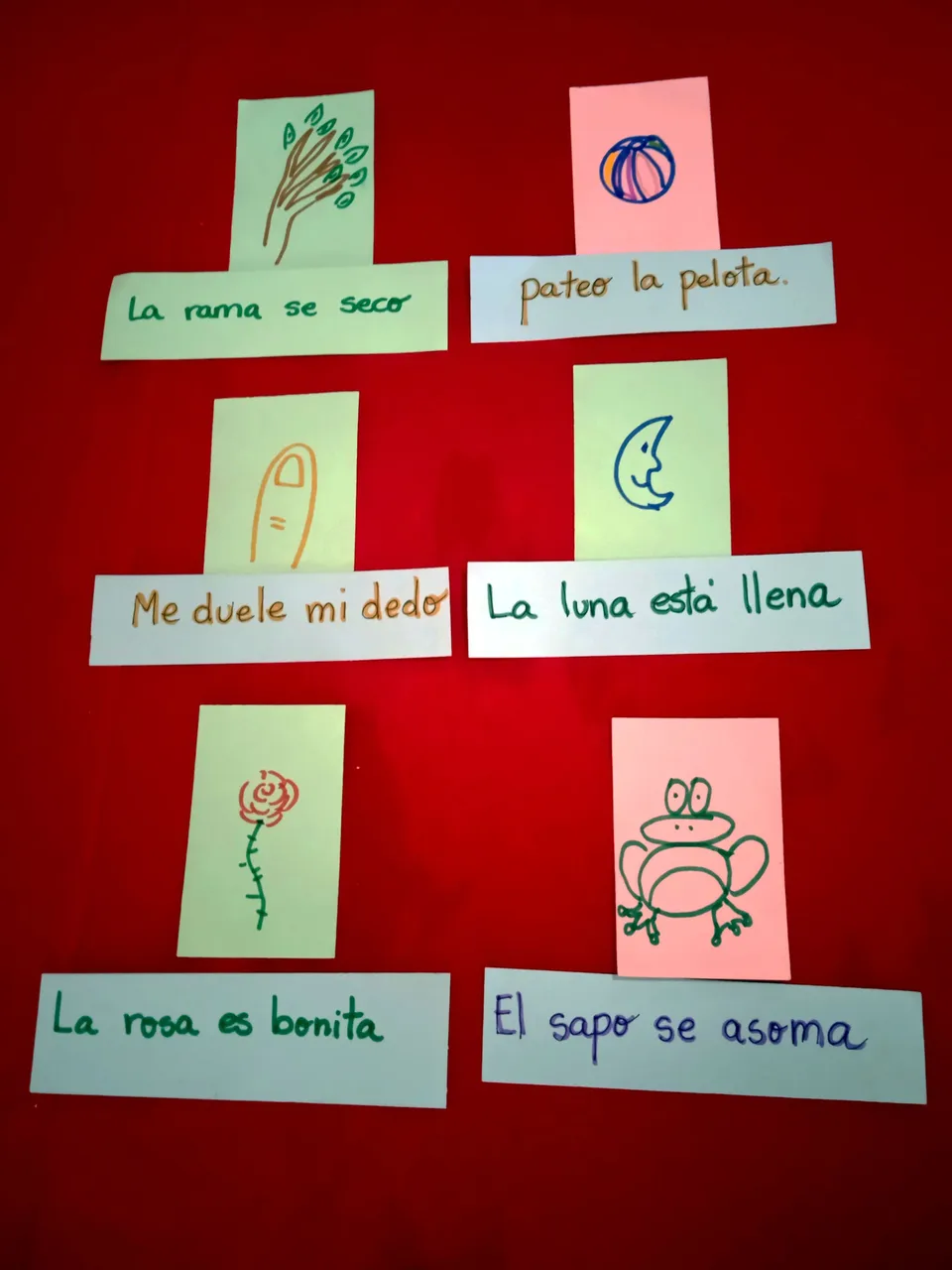
Y para terminar, pasaremos a la lectura de oraciones. A partir de las mismas imágenes, crearemos oraciones; ahora el juego consistirá en repartir oraciones, podemos comenzar por una oración, de manera que la pueda leer y le vamos mostrando dibujos y al aparecer el que corresponda con la oración lo tomará y serán sus puntos o aciertos, a medida que vaya avanzando en su velocidad lectora podemos darle dos oraciones y así reforzara también la memoria ya que deberá recordar cual es el objeto o sujeto mencionado en cada oración.
And finally, we will move on to the reading of sentences. From the same images, we will create sentences; now the game will consist of distributing sentences, we can start with a sentence, so that he can read it and we will show him drawings and when the one that corresponds to the sentence appears he will take it and it will be his points or hits, as he advances in his reading speed we can give him two sentences and thus he will also reinforce the memory since he will have to remember which is the object or subject mentioned in each sentence.

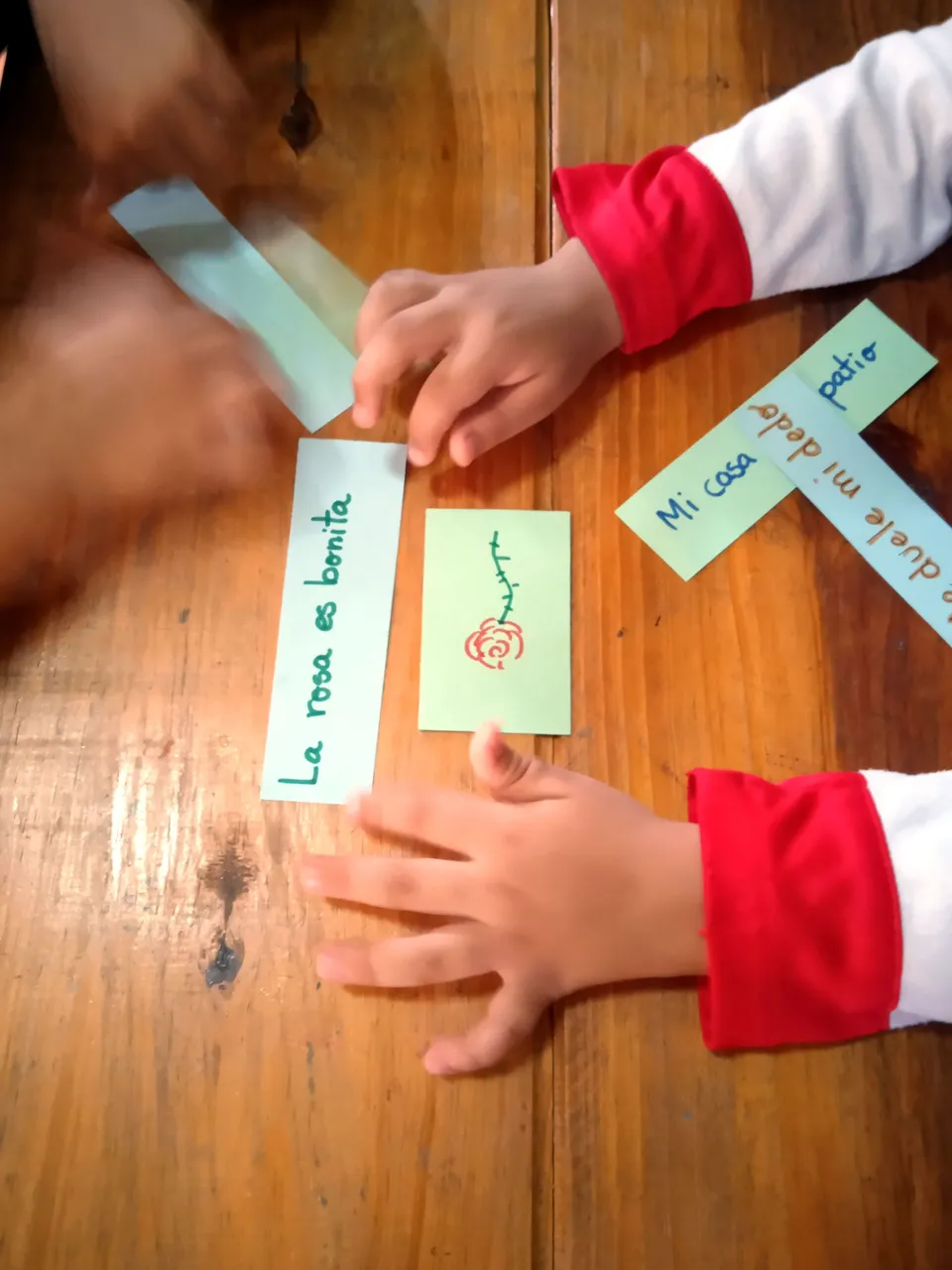
Podemos hacer la dinámica en forma contraria, repartimos 4 dibujos y vamos colocando una oración en el centro para que la lea, e identifique si tiene o no el dibujo que corresponde con la oración
We can do the dynamic in the opposite way, we distribute 4 drawings and we place a sentence in the center for you to read it, and identify whether or not you have the drawing that corresponds to the sentence.
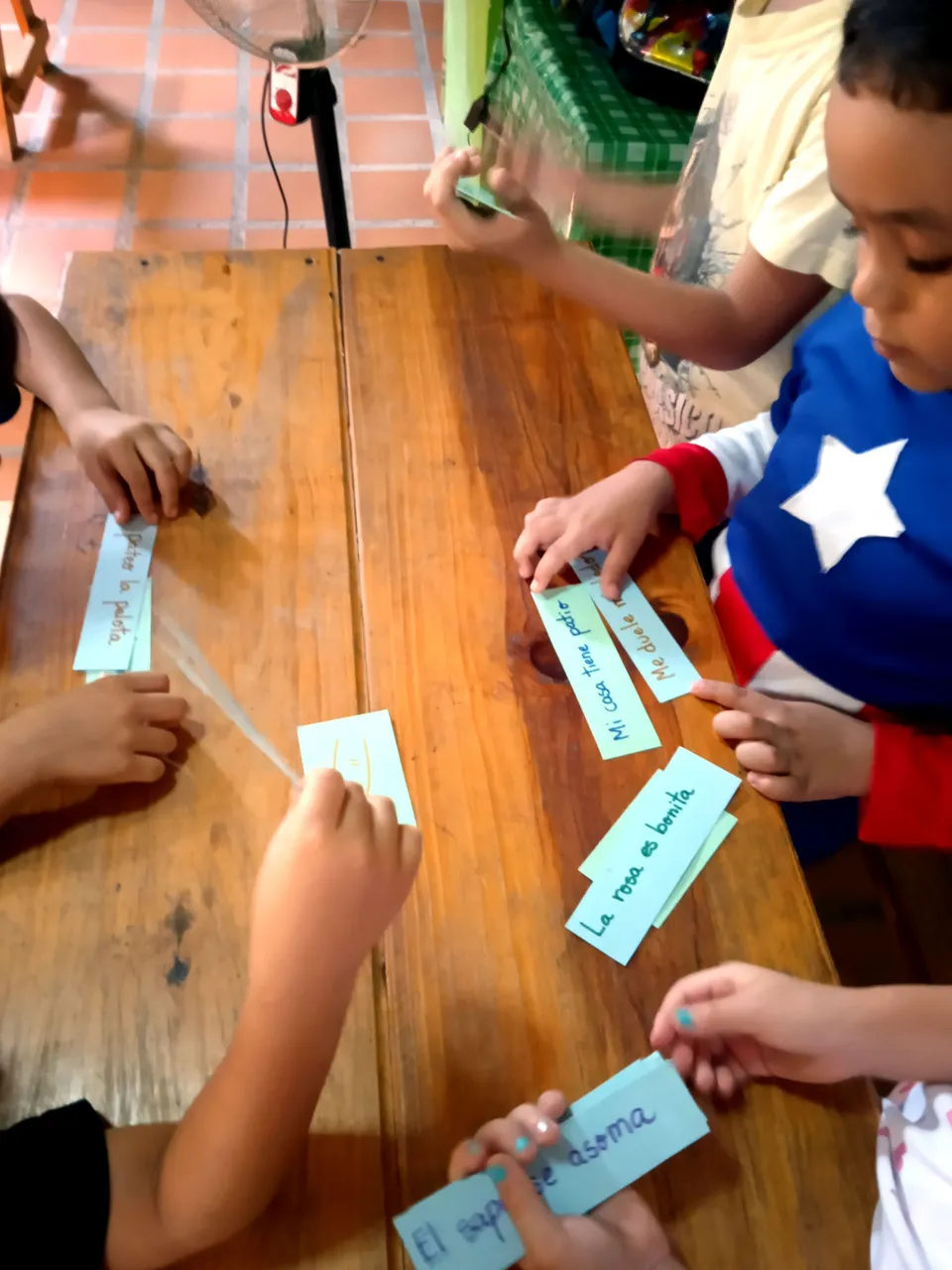
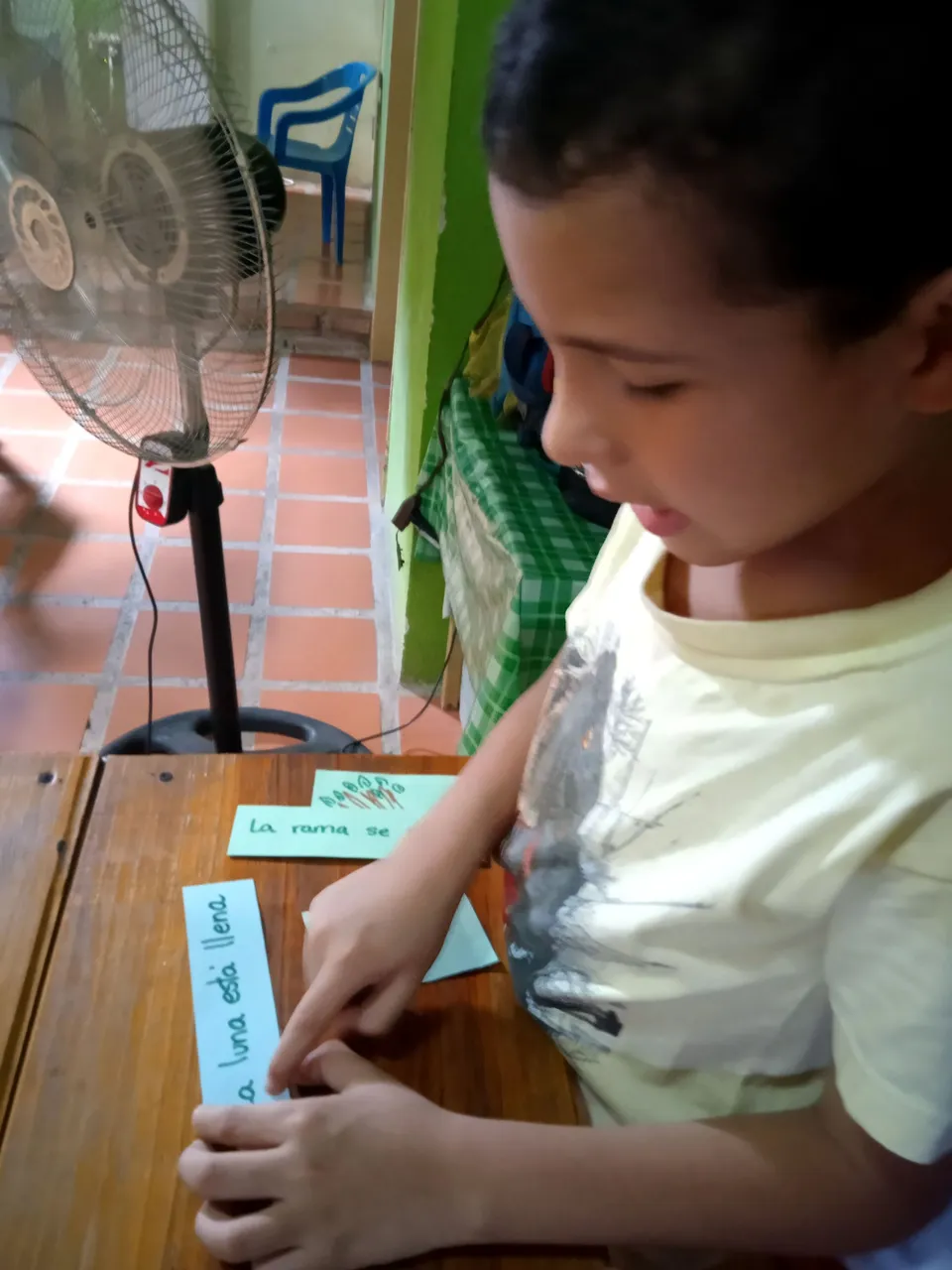
Pueden crear muchos dibujos con sonidos iniciales, para formar palabras y oraciones según avancen en el conocimiento de las letras y sonidos, para mi particularmente ha sido un buen recurso y sobre todo los niños lo disfrutan y les ayuda en la memoria visual y auditiva,análisis y síntesis de las palabras y las discriminaciones visuales y auditivas, ya que en cada uno de los juegos el niño no solo las identifica sino que también se le pide que las lea, según sea el caso, si se juega con sonidos iniciales, con palabras o con oraciones.
Espero que pueda ser de utilidad este recurso y se animen a realizar y practicar en casa, es muy sencillo y rápido de hacer y sobre todo es otra manera de estimular el aprendizaje de la lecto-escritura en nuestros niños. Es un placer compartir.
They can create many drawings with initial sounds, to form words and sentences as they advance in the knowledge of letters and sounds, for me particularly has been a good resource and especially children enjoy it and helps them in visual and auditory memory, analysis and synthesis of words and visual and auditory discriminations, since in each of the games the child not only identifies them but also asked to read them, as appropriate, if you play with initial sounds, words or sentences.
I hope this resource can be useful and encourage you to make and practice at home, it is very simple and quick to do and above all is another way to stimulate the learning of reading and writing in our children. It is a pleasure to share.

